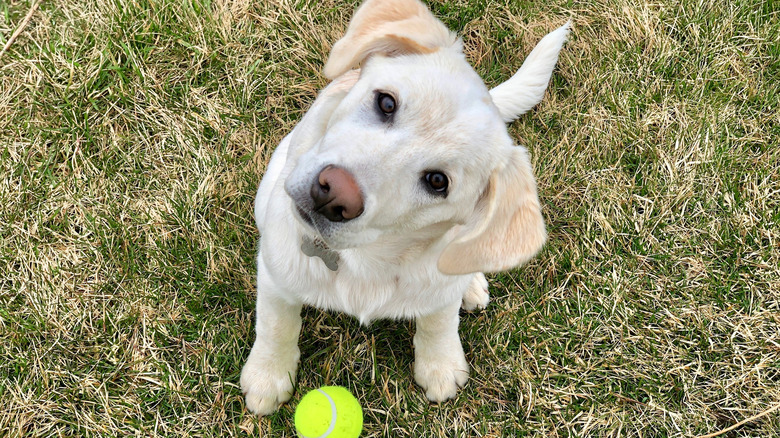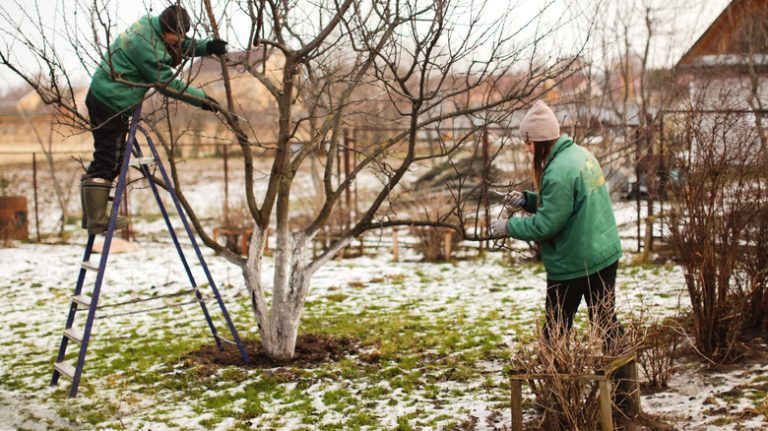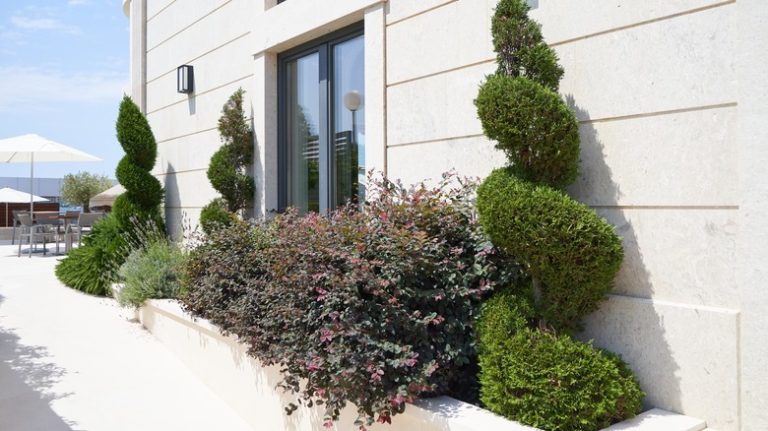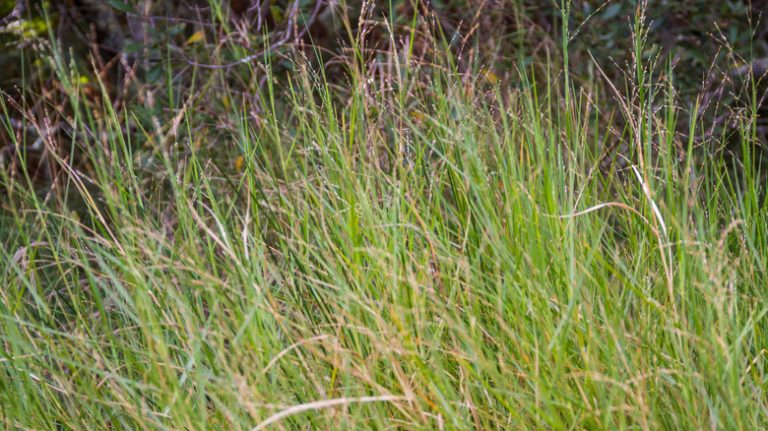Owning a dog comes with a lot of perks, but for your lawn, it can be problematic thanks to the way urine can damage the grass. If you have damaged areas of grass from urine, it’s possible to reseed those areas with the same type of grass you’re already using, but it’s also a good time to consider adding in grass like Bermuda grass or fescue. Both of these types of grass are more resistant to damage from urine and less likely to yellow, even if you have a larger dog.
Dog urine can contain high levels of nitrogen, a mineral that grass needs to grow and thrive. However, too much nitrogen can damage the soil and ultimately lead to concentrations that cause yellowing, drying out, and eventually death of the grass itself. Some dogs have urine with a much higher level of nitrogen in it, especially if their diets are mostly made up of processed proteins commonly found in commercially made dog food or if they aren’t drinking enough water. If you have a larger breed of dog or one that consistently urinates in the same spot each day, the amount of nitrogen in one area is concentrated even more, increasing the risk of damage to your yard.
Bermuda grass and fescue are more hardy and, therefore, can be important additions to your lawn, especially if you have bare spots developing from consistent urination. Use these types of grass to overseed and patch your yard and overcome these challenging areas.
Using fescue to patch dog urine spots in your grass
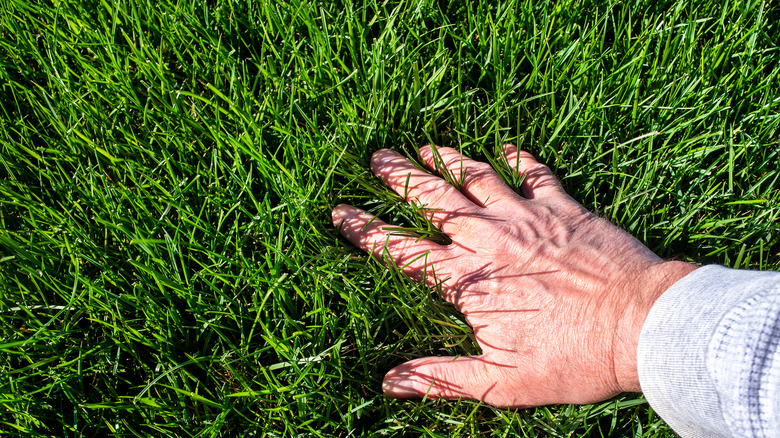
For most yards, dog urine isn’t a problem unless, as noted, there are high concentrations of nitrogen present. To know urine is causing damage to your yard, look for areas of dying, browned, or yellowed grass. The grass isn’t necessarily dead when it becomes yellowed, but it does need to be patched with a more suitable grass that can hold up to your dog’s frequent potty breaks.
The key to a dog-approved lawn is to patch damaged areas with a grass that can handle high concentrations of nitrogen or, better yet, seed with a hardy grass from the start. Fescue is excellent for dogs because it absorbs moisture more readily than some others. That makes it ideal for yards with excessive urine, like those with multiple dogs or larger pets. Most types of fescue grasses work well, but tall fescue tends to be the ideal choice when you can be particular.
Tall fescue is particularly durable. This grass doesn’t look much different from other grasses and will blend in well with the existing grass in most yards. However, it’s capable of withstanding more dog-caused damage, including high nitrogen levels from urine. It also does well keeping up with the foot traffic that playful pets can bring to a backyard. A hardy type of grass overall, its deep roots can overcome damage from digging and even holds up in shaded areas.
What makes Bermuda grass a good patching grass
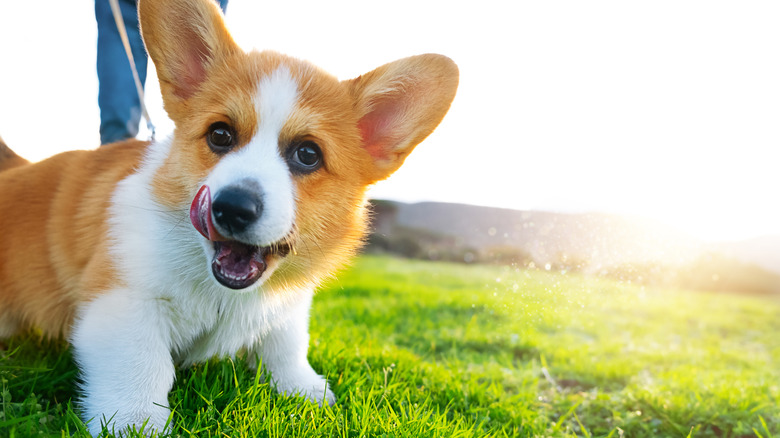
Bermuda grass is a fast-growing type of grass that tolerates dog urine well and is recommended for patching. It also does well in difficult conditions including drought, disease, and when few nutrients are in the soil. It’s considered to be a fast-healing grass, which means that your playful pups will not kill the grass overall and your yard will recover from damage readily. One reason for this is the grass’s deep root system, which helps to give it a more sturdy and reliable base to grow from — often why it’s used in parks and on playgrounds.
Bermuda grass is a warm-weather grass, meaning it does better in warmer climates. If it’s hot and humid, this grass will fill in those patches rather quickly, helping to support a naturally full lawn. For the best results, use it in areas with slightly acidic soil pH levels. You can add sulfur, aluminum sulfate, or ferrous sulfate additives to help support the re-growth with this particular species of grass.
If you’re looking for a few additional recommendations, don’t overlook zoysia and centipede grasses. In colder climates, Kentucky bluegrass is another alternative and can work as a fast-growing and healing grass to fill in those gaps from dog urine damage. Patching urine spots with the right type of grass will make your yard even more enjoyable for you and your four-legged family.

